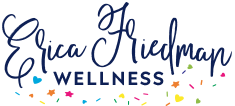Wall Reference: Try this to connect with your deep abdominals postpartum
One of my favorite ways to connect with the abdominals in more challenging core positions is to use the wall. Wait - what?!
I often put feet and hands on the walls of my house. It’s one of my favorite props! Added bonus - if you’re traveling and/or don’t have access to a ton of equipment, a wall is typically something we have access to.
Why use a wall in your workouts?
1. Hamstrings/find a better position: I love using the wall as a reference to help better sense my hamstrings. Like many moms in a more anterior tilt and extended posture, “dragging” up or down (depending on the exercise) the wall can be helpful for connecting to the proximal hamstrings. The proximal hamstrings, along with the deep abdominals, help control the position of the pelvis front to back. If you feel like you’re “dumping forward” at the pelvis in an anterior tilt when in an all fours position, try setting up near a wall and “dragging up” with the balls of your feet (heels will not be connected to the wall).
Controlling the hamstrings and “dragging up” in an all fours position will help us find a better stack (ribcage over pelvis). Being in a more stacked position will allow you to breathe better and feel your abdominals. Push through the ground, drag up the wall, and perform your movements from there. As you push through the ground watch for “rounding” through the upper back and dropping the chest. Gaze stays forward.
Bear Tuck/Untuck: I’ve included some advanced core exercises below to experiment with in an all fours position. I recommend starting with bear breathing and the bear tuck/untuck exercise, which helps train moving through an anterior / posterior tilt without smooshing the glutes. You’ll really sense the proximal hamstrings and deep abdominals working here as you move the pelvis through space.
More advanced examples below. Check out this post with some other advanced core work.
2. Foot reference: I also love the wall to mimic the ground, but without gravity. If you’re learning how to connect with different parts of your feet, starting on the ground with feet against the wall can be helpful. If you cannot feel your heel while you’re laying on your back, you may also have trouble standing.
Why talk about the feet? The function of your foot can have a lot to do with the pelvic floor and the muscles that stabilize the hips. I often see moms with high arches / supinated feet. If your foot lacks the ability to lengthen and load into the ground and then spring to push you forward AND you are constantly struggling with pelvic floor tension, SI pain, leaking, etc., then it may be helpful to also look at your feet. My mentor, Katie St. Claire, dives into the feet in this post.
Coming back to the wall - learning how to sense different parts of your feet on the wall before adding gravity can be helpful. Everyone is different, so play with what works for you. The biggest benefit being on the wall in something like a 90/90 is being able to find your heels. Many moms are pushed forward into the forefoot, so being able to pull ourselves “back” and find the heels can be helpful for finding a more stacked position and avoiding cranky knees in exercises like squats and lunges.
Progression for Foot Drills
Wall Reference in something like a 90/90 to find your heels —> Half Kneeling —> Standing
Videos / exercises below incorporate foot on wall reference. In these movements incorporating the feet on the wall helps you get more out of each movement and better sense your feet, glutes, and abdominals.
3. Reference point: As a hyper-mobile person, it can be difficult to sense and build tension in my body and orient myself in space. I’ve found that a lot of moms are very similar. Placing my feet against the wall helps with balance, provides something to hold onto, and gives me the “push off” I need to help find glute length and create force off the wall. Having a reference point can also be helpful so the body feels a sense of “safety,” which can be helpful when addressing pelvic floor symptoms. If we can maintain a good position and feel “safe,” perhaps we can release the gripping in other parts of the body, like the pelvic floor.
Below are examples of how to integrate this within strength training.
Have you used the wall in your set up? Give it a go and let me know what you think :)
You’ll find the wall (and other props) in my postpartum fitness programs (especially BUILDCore) and in all of my 1:1 coaching.
Feel good mama.
xoxo,
Erica
